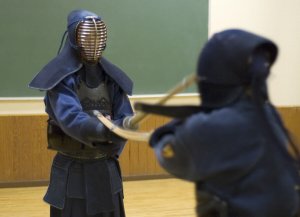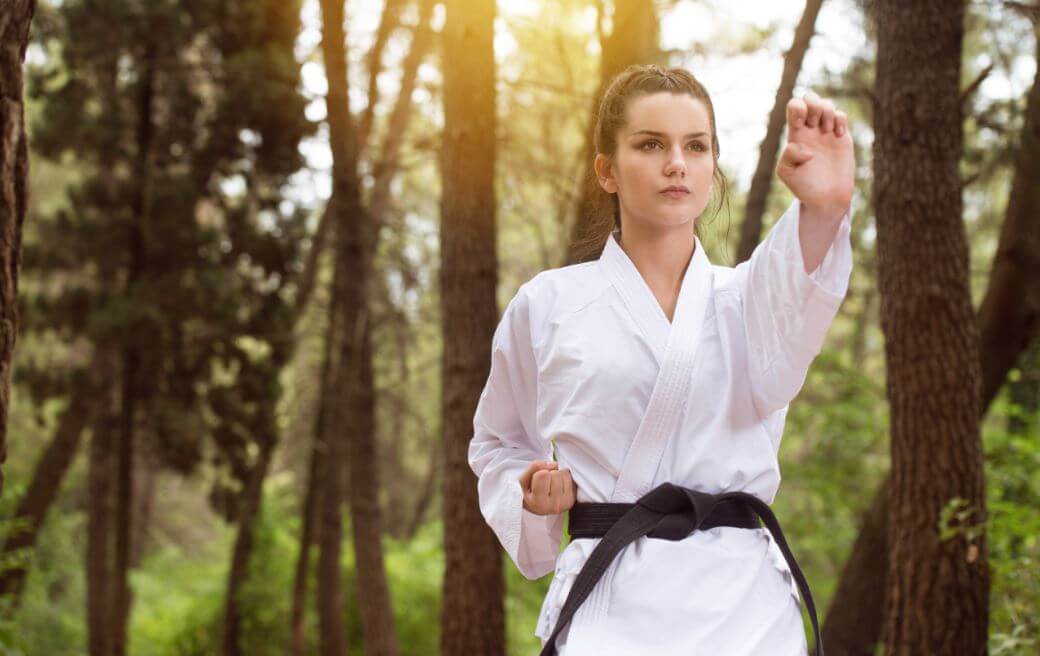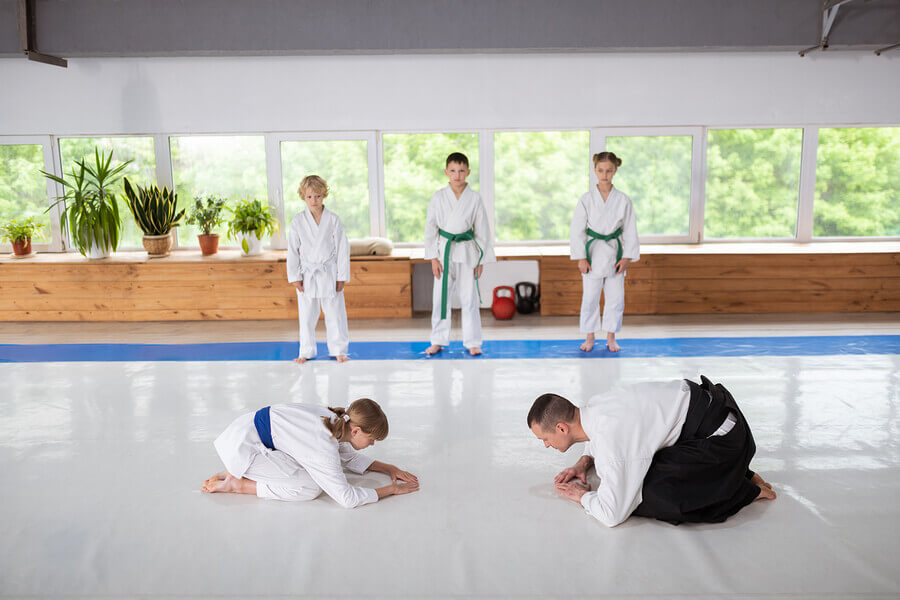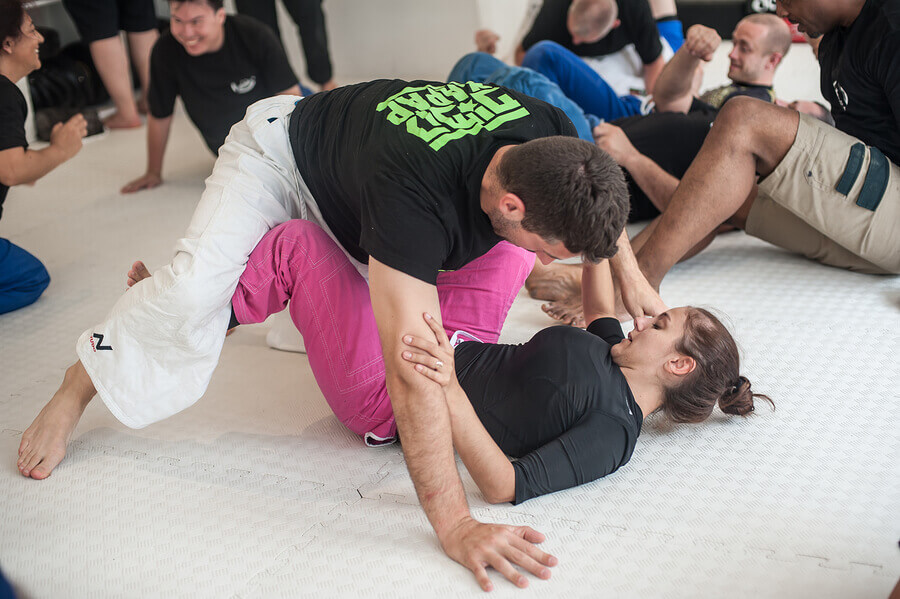6 Japanese Martial Arts

The Japanese martial arts aren’t simply sports, they’re a spiritual path, a way of life and promote personal growth. Read along in order to find out more about Japanese martial arts.
Japanese martial arts
Before talking about Japanese martial arts, we must first mention the Samurai Warriors and the system which restricted the use of weapons for those that didn’t belong to warrior classes. Weaponless disciplines were created for ‘non-warriors’ as a result.
The techniques of Japanese martial arts are closely related to the country’s history, culture and philosophy of non-violence. It’s important, however, to divide these martial arts into two groups: Koryu or old school and Gendai Budo or modern martial arts. The latter group contains most of the martial arts that are popular both in Japan and internationally.
Judo
Judo can be translated to “the path of flexibility” and it’s a martial art that influences the mental and emotional development of its practitioners, known as judokas. ‘No resistance’ is a technical principle in judo and it’s based on yielding to the strength of your opponent in order to obtain more energy.
Judogi is the name for the judo uniform. Its color is either blue or white, although white is more popular. The belt color shows the level of experience.

Karate: Japanese martial arts
This is one of the most well-known martial arts and it translates to ‘the path of the empty hand’. It’s connected to the differentiation that was made in Japan between warriors and non-warriors.
Karate involves the use of punches, kicks, blocks and open hand attacks. Karate practitioners wear uniforms that consist of pants, a jacket, and a belt. The belts have different colors in order to show the practitioner’s degree or grade.
Aikido
Aikido means ‘the path of energy and harmony’. Developed in the thirties, this is a more modern type of martial art. The main characteristic of this martial art is that it aims to use the opponent’s energy in order to defeat them.
Aikido practitioners are peace promoters. In addition, they also subscribe to the concept of vital energy. The practice of greetings is very important in aikido, therefore greetings are performed before the start of every session.

Japanese martial arts: sumo
Sumo wrestling is the national sport of Japan and it’s professionally practiced by men. It consists of two wrestlers who face off against each other in a circular arena. Sumo fights usually only last for a few seconds and the loser has to leave the arena.
Sumo wrestlers use various throwing techniques, chokeholds, and attacks used in ancient times by Samurais.
Jiu-jitsu
Jiu-jitsu directly translates to ‘compliance art’. However, it’s known as the martial art that uses ‘indirect’ forces. As with sumo wrestling, Jiu-jitsu is an ancient Japanese martial art.
The objective of jiu-jitsu is to use holds to defeat the opponent. It’s a close combat martial art that was used by feudal warriors. Jiu-jitsu is thought to be the father of judo and aikido.
Jiu-jitsu differs from the other martial arts due to the fact that weapons such as ropes and small cutting instruments are allowed. It’s one of the sports that inspired the creation of mixed martial arts.

Kendo: Japanese martial arts
Kendo is the last martial art on our list and it means ‘the path of the saber’. Born in Japan in the 1920s, kendo practitioners wear armor that protects the head, neck, forearms, chest, abdominal and pelvic areas.
In addition, within the ancient and traditional martial arts, we can also find disciplines such as Kenjutsu, Iaijutsu, Kyujutsu, Battojutsu, Naginatanjutsu, Sojutsu and Ninjutsu, Kuydo, and Shorinji Kempo.
The Japanese martial arts aren’t simply sports, they’re a spiritual path, a way of life and promote personal growth. Read along in order to find out more about Japanese martial arts.
Japanese martial arts
Before talking about Japanese martial arts, we must first mention the Samurai Warriors and the system which restricted the use of weapons for those that didn’t belong to warrior classes. Weaponless disciplines were created for ‘non-warriors’ as a result.
The techniques of Japanese martial arts are closely related to the country’s history, culture and philosophy of non-violence. It’s important, however, to divide these martial arts into two groups: Koryu or old school and Gendai Budo or modern martial arts. The latter group contains most of the martial arts that are popular both in Japan and internationally.
Judo
Judo can be translated to “the path of flexibility” and it’s a martial art that influences the mental and emotional development of its practitioners, known as judokas. ‘No resistance’ is a technical principle in judo and it’s based on yielding to the strength of your opponent in order to obtain more energy.
Judogi is the name for the judo uniform. Its color is either blue or white, although white is more popular. The belt color shows the level of experience.

Karate: Japanese martial arts
This is one of the most well-known martial arts and it translates to ‘the path of the empty hand’. It’s connected to the differentiation that was made in Japan between warriors and non-warriors.
Karate involves the use of punches, kicks, blocks and open hand attacks. Karate practitioners wear uniforms that consist of pants, a jacket, and a belt. The belts have different colors in order to show the practitioner’s degree or grade.
Aikido
Aikido means ‘the path of energy and harmony’. Developed in the thirties, this is a more modern type of martial art. The main characteristic of this martial art is that it aims to use the opponent’s energy in order to defeat them.
Aikido practitioners are peace promoters. In addition, they also subscribe to the concept of vital energy. The practice of greetings is very important in aikido, therefore greetings are performed before the start of every session.

Japanese martial arts: sumo
Sumo wrestling is the national sport of Japan and it’s professionally practiced by men. It consists of two wrestlers who face off against each other in a circular arena. Sumo fights usually only last for a few seconds and the loser has to leave the arena.
Sumo wrestlers use various throwing techniques, chokeholds, and attacks used in ancient times by Samurais.
Jiu-jitsu
Jiu-jitsu directly translates to ‘compliance art’. However, it’s known as the martial art that uses ‘indirect’ forces. As with sumo wrestling, Jiu-jitsu is an ancient Japanese martial art.
The objective of jiu-jitsu is to use holds to defeat the opponent. It’s a close combat martial art that was used by feudal warriors. Jiu-jitsu is thought to be the father of judo and aikido.
Jiu-jitsu differs from the other martial arts due to the fact that weapons such as ropes and small cutting instruments are allowed. It’s one of the sports that inspired the creation of mixed martial arts.

Kendo: Japanese martial arts
Kendo is the last martial art on our list and it means ‘the path of the saber’. Born in Japan in the 1920s, kendo practitioners wear armor that protects the head, neck, forearms, chest, abdominal and pelvic areas.
In addition, within the ancient and traditional martial arts, we can also find disciplines such as Kenjutsu, Iaijutsu, Kyujutsu, Battojutsu, Naginatanjutsu, Sojutsu and Ninjutsu, Kuydo, and Shorinji Kempo.
All cited sources were thoroughly reviewed by our team to ensure their quality, reliability, currency, and validity. The bibliography of this article was considered reliable and of academic or scientific accuracy.
- Espartero, J., Villamón, M., & González, R. (2011). Artes marciales japonesas: Prácticas corporales representativas de su identidad cultural. Movimento.
This text is provided for informational purposes only and does not replace consultation with a professional. If in doubt, consult your specialist.








